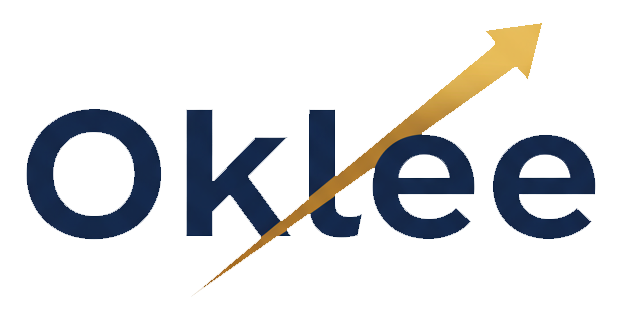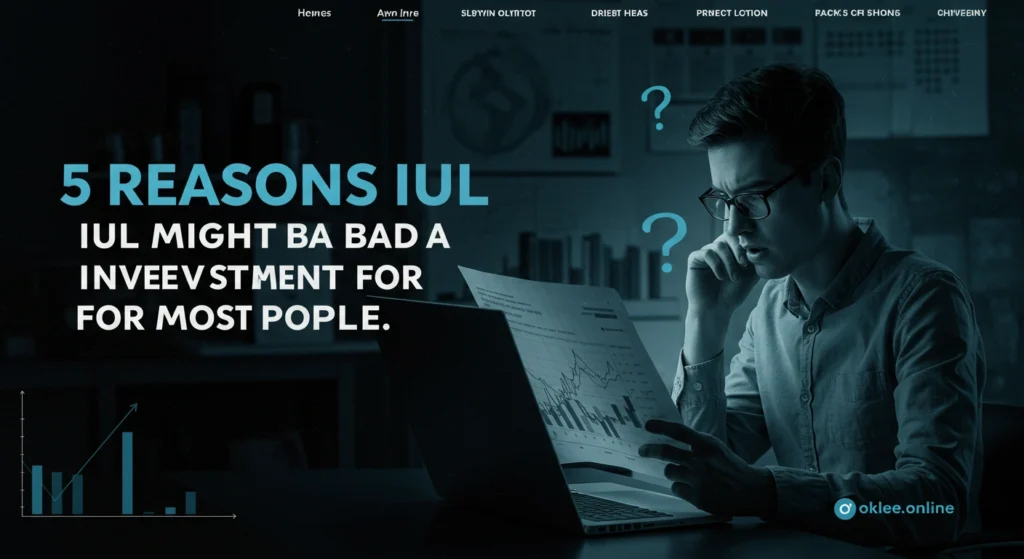Indexed Universal Life (IUL) insurance is often sold as the perfect mix of life insurance and investment. Agents promote it as a way to grow tax-free wealth while securing lifetime coverage. Sounds great—on paper.
But the truth is, Indexed Universal Life insurance isn’t for everyone. In fact, for many people, it’s a bad investment.
If you’re considering an IUL policy or were pitched one recently, here are five key reasons to take a closer look. Understanding the IUL risks can help you avoid a financial decision that could cost you much more than you think.
1. High and Hidden Fees Eat Into Your Returns
One of the biggest problems with IUL is that it’s packed with fees—many of which aren’t clearly explained upfront.
These include:
- Premium expense charges
- Administrative fees
- Cost of insurance (COI) charges that increase with age
- Surrender charges if you cancel early
These fees are deducted from your cash value, and they reduce your ability to build long-term returns. In the first 5–10 years of a typical IUL, you may see little to no growth—even if the stock market performs well.
Bottom line: If you’re looking for efficient growth, IUL often performs worse than traditional investments like index funds or Roth IRAs.
2. Returns Are Capped and Floor Is Misleading
IUL policies are linked to market indexes like the S&P 500. The idea is that you get “market upside” without losing money when the market drops.
But here’s what agents often don’t tell you:
- Caps: Your earnings are limited. For example, if the market goes up 15%, you may only earn 8–10%.
- Participation rates: Some policies only give you a portion of the gain (e.g., 80%).
- Floor of 0%: You don’t lose money in down years—but you also don’t earn anything. And fees are still deducted.
So even though you’re “protected,” your actual net return may be far less than expected—especially when you factor in rising insurance costs.
Example: If the market returns 12%, and your policy has a 9% cap with 80% participation, you only get 7.2%. After fees, it might be 3–4%—or even negative.
3. IUL Policies Are Complex and Easy to Misunderstand
Most people don’t fully understand how IUL works—and that’s dangerous.
Why? Because policies depend on multiple moving parts:
- Interest crediting methods
- Changing index caps and floors
- Rising insurance charges over time
- Loan interest rates if you borrow from the policy
Even small misunderstandings can cost you thousands. For example, many buyers assume they’ll have a guaranteed retirement income from their IUL—but don’t realize that if the policy performs poorly or premiums aren’t paid, the policy can lapse.
Worse, agents often overpromise and underexplain. The illustrations you see are based on best-case scenarios, not real-world outcomes.
4. Policy Loans Can Backfire
One selling point of IUL is that you can borrow tax-free from your cash value. Sounds appealing, right? But there are major catches.
When you borrow from your IUL:
- You’re charged interest on your own money (often 4–6%)
- Your loan reduces the cash value and death benefit
- If the policy lapses while a loan is active, you’ll owe taxes on the loan amount
And remember: insurance fees continue to rise each year. If your policy doesn’t earn enough to cover those costs and support the loan, it can collapse.
Many people use loans in retirement expecting income, only to find their policy drained and a surprise tax bill waiting.
5. Better (Simpler) Investment Options Exist
Unless you’re ultra-wealthy or have complex estate planning needs, an IUL usually isn’t your best move. Why? Because there are simpler, cheaper, and more effective ways to grow wealth.
Here’s how IUL stacks up against other options:
| Investment Option | Growth Potential | Fees | Liquidity | Tax Benefits |
|---|---|---|---|---|
| IUL | Moderate (capped) | High | Limited | Tax-deferred |
| Roth IRA | High (uncapped) | Low | High | Tax-free growth & withdrawal |
| Index Funds | High (market-based) | Very low | High | Capital gains tax |
| Term Insurance + Investments | High (if combined well) | Low | Flexible | Separate benefits |
With a Roth IRA or simple brokerage account, you:
- Avoid insurance fees
- Keep full control of your money
- Get better long-term returns
And if life insurance is important to you, a term life policy is much cheaper and more straightforward.
When Might IUL Make Sense?
While IUL is risky for most people, it can work in certain scenarios:
- You’ve maxed out all other tax-advantaged investment accounts
- You’re high-income and want long-term estate planning tools
- You fully understand the risks and costs
- You can afford to overfund the policy and let it grow for decades
- You want life insurance with a small investment feature, not the other way around
Even then, it’s crucial to compare multiple policies, read the fine print, and work with an advisor who isn’t just selling for commission.
Final Thoughts
Indexed Universal Life insurance may sound like the best of both worlds—but in reality, it’s not the ideal investment for most people.
The fees are high, the growth is limited, and the complexity is dangerous if you don’t fully understand it. In most cases, you’re better off separating your insurance and investments: buy term life insurance, and invest the rest in low-cost index funds or tax-advantaged accounts.
Before you commit to an IUL policy, do your research. Ask questions. Get a second opinion. Because once you’re locked in, it can be costly to get out.
For more about Finance & Investment search on oklee.online




